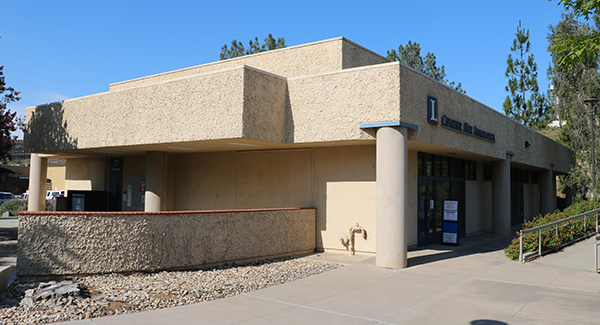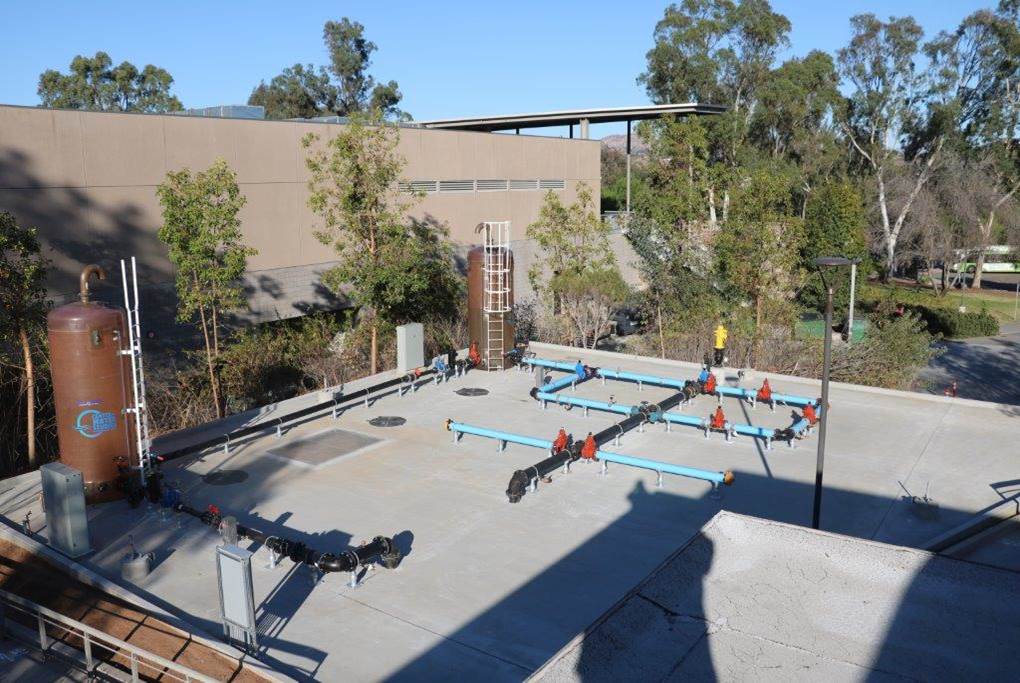Center for Water Studies
With the leadership of Don Jones and support of our local college and district administrations,
the former Water and Wastewater Technology Program at Cuyamaca College has been transformed
into the CENTER for WATER STUDIES. Utilizing funding from the GCCCD Prop V bond,
a National Science Foundation grant, the California Community College Strong Workforce
grant and support from local water agencies and waterworks industry suppliers, the
Water and Wastewater Technology Program will be known as the Center for Water Studies
beginning in the Spring semester of 2019.

Center for Water Studies
The Center for Water Studies program has been relocated to the “L” Building, which has been remodeled and outfitted to meet the needs of the program. Our new home in the "L" building provides two traditional classrooms, a fully equipped laboratory classroom for Backflow Prevention and Cross-Connection Control training, and a state-of-the-art laboratory for Water Quality Analysis. Approximately $ 1 million dollars of funding for this transformation is being provided by the GCCCD Proposition V Construct Bond passed by voters in 2012. The "L" building facility will accommodate all of the Center for Water Studies program courses and labs, and include two offices and storage space to further support the program.

Water Distribution System Skill-Building Facility
The Center for Water Studies also includes a state-of-the art water distribution demonstration system that functions as a laboratory, integrating science, technology, engineering and math into a hands-on career preparation program that will better prepare students to manage, improve and maintain water and wastewater systems throughout the state. The working mantra for the Center is to provide
“Learning by Doing”
opportunities for our students and visitors to the Center.
This fully operational, above ground water system will be utilized to duplicate tasks that employees will perform during the entry level period of their careers in the water and wastewater industry. Students will utilize a variety of hand and power tools to assemble, disassemble, operate, maintain, and repair a wide range of pumps, valves, pipe, fittings, and other industry related equipment. They will also have the opportunity to learn industry safety and health practices such as confined space entry, use of Personal Protective Equipment, ladder and fall protection safety, and other safety topics regularly encountered in the industry. The above ground skill-building facility will be monitored and operated by a Supervisory Control and Data Acquisition system (SCADA) through computers located in the adjacent Center for Water Studies classrooms. The water distribution system will also provide “summer camps” for area high school Science, Technology, Engineering and Math (STEM) students and Career Technical Education teachers to learn about the water and wastewater infrastructure industry and its impact on our environment, economy, and community. Funding to construct this facility has been provided by a combination of California Community College Strong Workforce grant funds, NSF grant funds and donations of equipment and resources from the local waterworks industry manufacturers and distributors.
Collectively, these programs and facilities will make the Center for Water Studies at Cuyamaca College the premier water and wastewater training and education program in the state of California.

National Science Foundation – Advanced Technology Education Grant
Cuyamaca College recently received an $892,000 Advanced Technology Education grant to improve and expand training of the next generation of water industry professionals who will operate and maintain California’s complex water supply and delivery systems. Main areas of focus for this grant are:
- Creating the Center
for Water Studies:
The Center will provide classroom space to house the program, a state-of-the-art water distribution demonstration system that will function as a laboratory, integrating science, technology, engineering and math into a hands-on career preparation program that will better prepare students to manage, improve and maintain water and wastewater systems throughout the state. The working mantra for the Center is to provide
“Learning by Doing”
opportunities for our students and visitors to the Center. - Targeted Recruitment:
To respond to a high level of projected retirements and the need for a larger pool of water utility workers, the grant will pro-actively recruit women and transitioning active-duty military members to the Center for Water Studies’ comprehensive course offerings and educational opportunities. - Curricula Development:
Cuyamaca College will utilize grant funding to assist students in developing math and work readiness skills, and will provide other support services to help prepare students for a successful career in the water and wastewater industry. We will also be developing several new courses covering the emerging skills and technologies being used in the industry as well as infusing hands-on skill building activities into the majority of our existing courses.
- Improve Educational Pathways:
Grant funding will create clear, educational pathways leading to industry certifications in water treatment, water distribution, backflow and cross connection control, wastewater treatment, and wastewater collection. In addition, California WaterWorks will partner with Grossmont Union High School staff to infuse water and wastewater management concepts into their math and science lessons and provide early awareness/exposure to potential careers in the water and wastewater industry for their students.
Grant staff will work with personnel from Otay and Helix Water District, Padre Dam Municipal Water District, Sweetwater Authority, the City of San Diego Public Utilities Department, plus other local water and wastewater agencies, as well as several statewide industry associations such as the California Water Environment Association and the California/Nevada Section of the American Water Works Association on these initiatives.